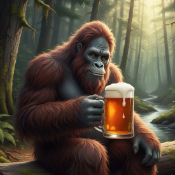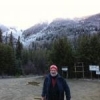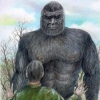I made an afternoon trip out to the location of the sighting from 2007, reported to me by Mike, which I mentioned in my post of Sep.22, on the previous page. He had said that the creature seen by himself and a companion that day in Oct of 2007 had crossed in front of their vehicle in daylight just at the Km 4 marker on the Harrison East FSR. It was seen to cross the road from the forested downhill side, and proceeded uphill through a recent clearcut, then cross the Slollicum FSR above the cut, and disappear into the old second growth timber above that road, a distance of about 250m (280yds).
The Slollicum FSR had been gated for the last 3 years, but I was fortunate to find that the gate was now removed, as logging operations further uphill had been completed. This allowed access to that road, but with the challenge of newly cut drainage channels every few hundred meters, as the road was now considered "decommissioned" until needed for logging in the future. My newly lifted Outlander, with larger tires installed earlier this week, could just barely crawl through the trenches, and I did manage to scuff both the front and rear bumper skins in doing so. Oh well, it's 18 months old now, and over 80,000km, so not a new car to cry over a few scratches any more. I got a few shots of the sighting location, and a few of the fall colours for fun.
Looking down the now 12 year old clearcut to HarrisonE FSR from Slollicum Rd
The second growth timber above Slollicum FSR
Parked on Slollicum
Fall colours higher up the Slollicum road


